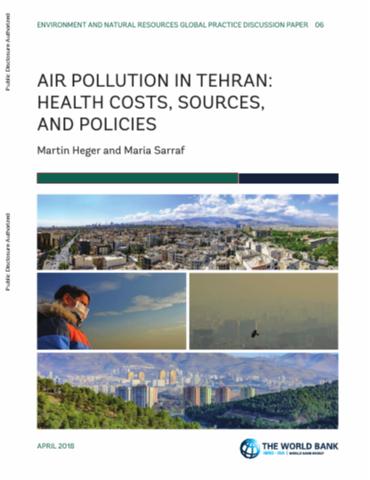Air pollution in Tehran: health costs, sources, and policies
 Tehran, the capital of the Islamic Republic of Iran (IRI), is located in the north of the country with a population of about 8.5 million. The population can reach over 12.5 million during the day, with people from nearby cities commuting daily to Tehran for work. There are more than 17 million vehicular trips per day in Tehran, and many of the vehicles have outdated technology. Thus, the air in Tehran is amongst the most polluted in the world. Topography and climate add to the pollution problem. Tehran is at a high altitude and is surrounded by the Alborz Mountain Range, which traps polluted air. Temperature inversion, a phenomenon particularly occurring during the winter months, prevents the pollutants from being diluted. Several recent trends indicate that reducing air pollution will not be straight forward: rapid population growth (partially due to migration from other cities), industrial development, urbanization, and increasing fuel consumption are pressure points for clean air in Tehran. To design an effective approach to air pollution management, it is important to diagnose the
problem, determine its sources, and identify affordable and sustainable solutions. This discussion paper provides an overview of the seriousness of air pollution in the city of Tehran; quantifies its impact in terms of health and economic costs; identifies the sources of pollution; and, finally, provides a framework to address the problem.
Tehran, the capital of the Islamic Republic of Iran (IRI), is located in the north of the country with a population of about 8.5 million. The population can reach over 12.5 million during the day, with people from nearby cities commuting daily to Tehran for work. There are more than 17 million vehicular trips per day in Tehran, and many of the vehicles have outdated technology. Thus, the air in Tehran is amongst the most polluted in the world. Topography and climate add to the pollution problem. Tehran is at a high altitude and is surrounded by the Alborz Mountain Range, which traps polluted air. Temperature inversion, a phenomenon particularly occurring during the winter months, prevents the pollutants from being diluted. Several recent trends indicate that reducing air pollution will not be straight forward: rapid population growth (partially due to migration from other cities), industrial development, urbanization, and increasing fuel consumption are pressure points for clean air in Tehran. To design an effective approach to air pollution management, it is important to diagnose the
problem, determine its sources, and identify affordable and sustainable solutions. This discussion paper provides an overview of the seriousness of air pollution in the city of Tehran; quantifies its impact in terms of health and economic costs; identifies the sources of pollution; and, finally, provides a framework to address the problem.
